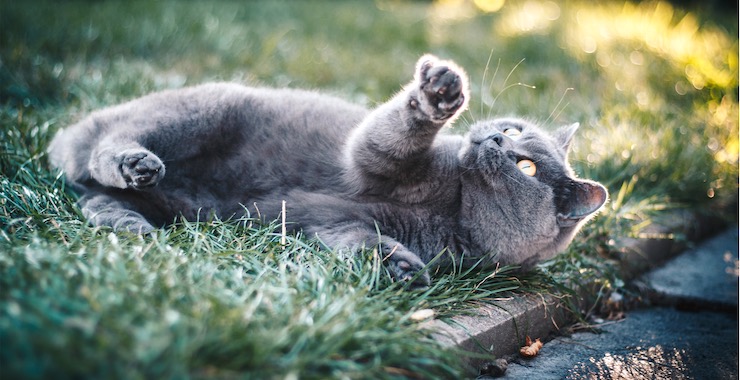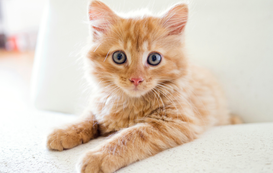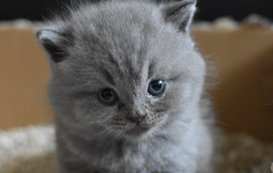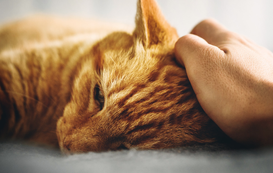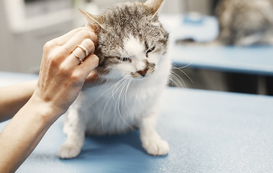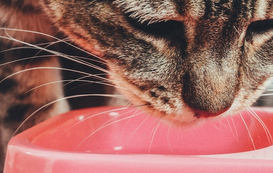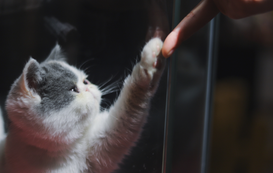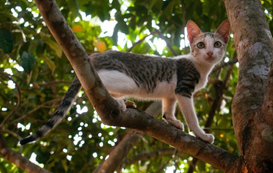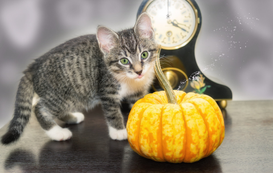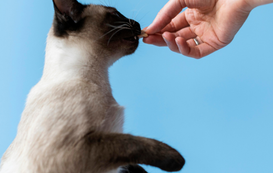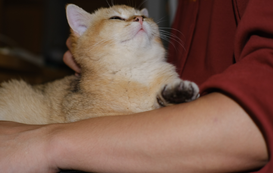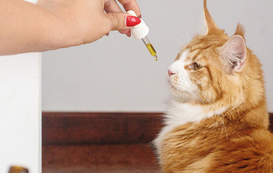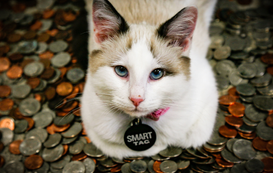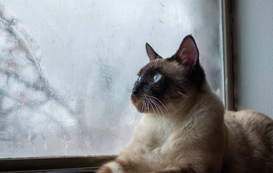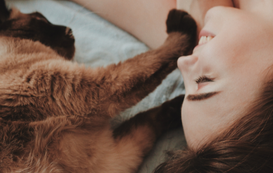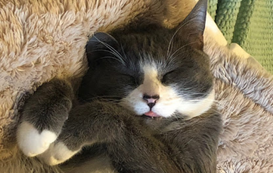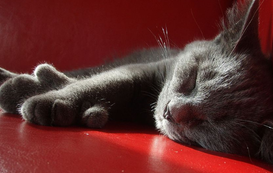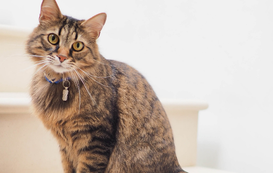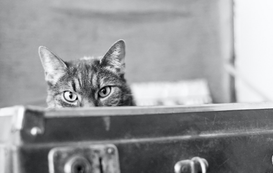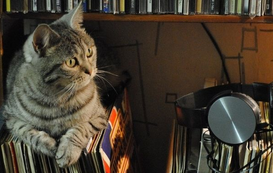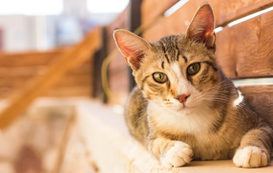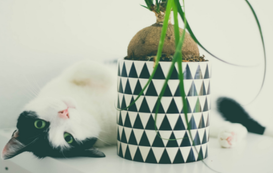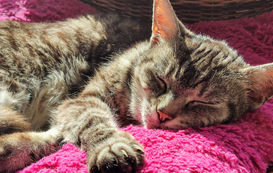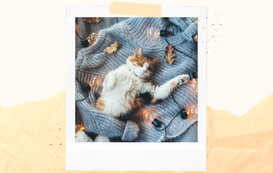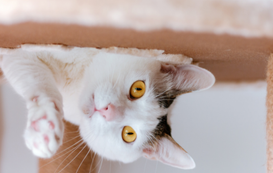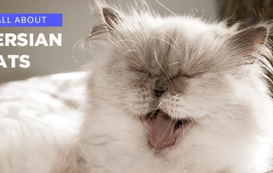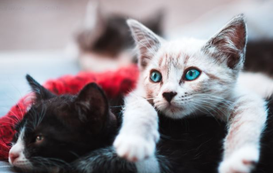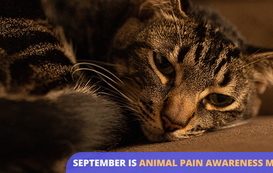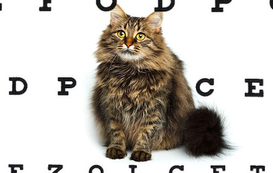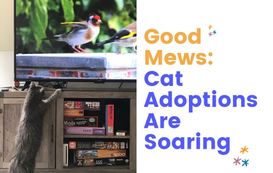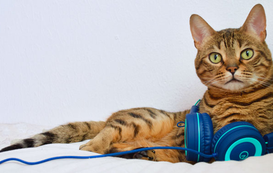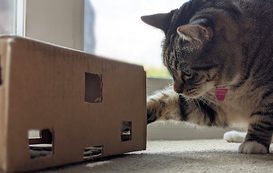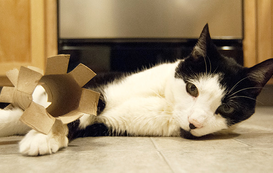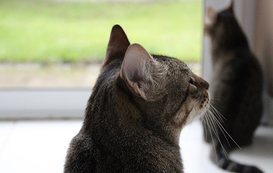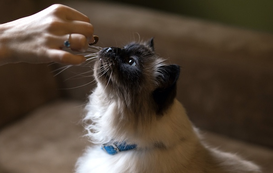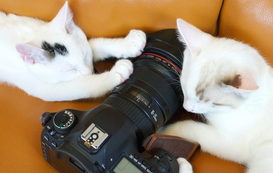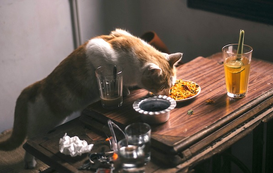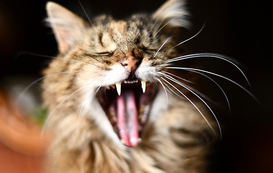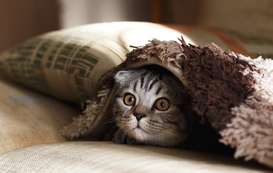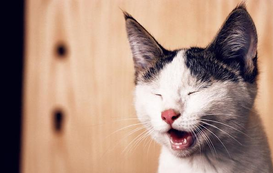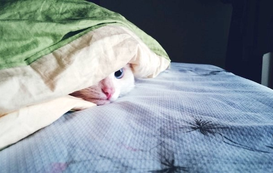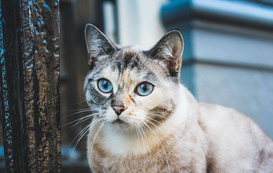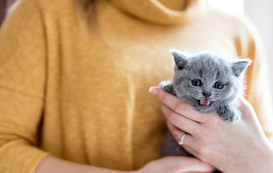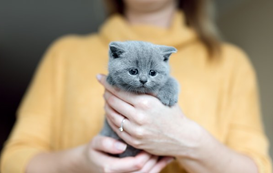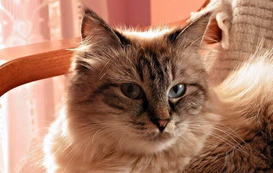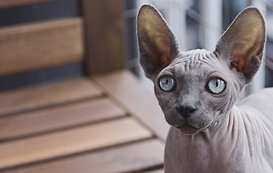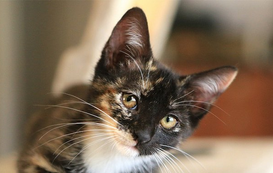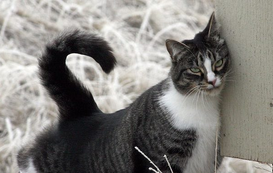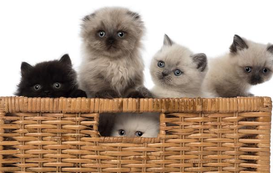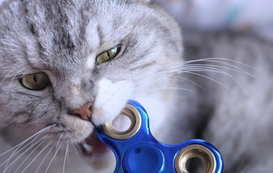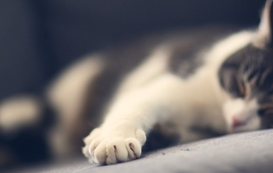Popular posts
Indoor vs. Outdoor - Should You Let Your Cat Go Outside?
This post contains affiliate links and Meowtel will be compensated if you make a purchase after clicking on the links.
Shouldn't Fluffy and Rat Tail be allowed to go outside because being inside is boring? While other cat parents may agree with you, most veterinarians will not. Nor will I. I am staunchly against letting cats roam outside. Unless a cat is truly feral, it is my belief that they have absolutely no business being out in the elements. Unless, of course, they have a catio; I am all for enclosed catios.
The ever popular Maxwell Wellington was found as a stray in Upstate New York. We don’t know anything about his life before finding us. He may have been a legit stray or he may have been someone’s cat who had been left behind or let go. (We tried to find his owner for months; no one claimed him.) We were lucky that he didn’t have any diseases, but his love for the outdoors was very obvious. It would have been very easy for us to let him be an indoor/outdoor cat, but my mom and I didn’t believe in that. We wanted to keep the beautiful healthy boy as healthy as he could possibly be.
Indoor-only cats have a much longer life expectancy than outdoor cats do. While the information on this varies slightly, the most consistent findings show that indoor cats generally live anywhere from 10-20 years. The average lifespan of outdoor cats is only 2-5 years. I know, I know, you’re thinking, “But my cat is indoor AND outdoor!” It doesn’t matter. The time spent outdoors, not in an enclosed catio, still runs the same risks as if it were an outdoor-only cat.
But what if my cat gets bored inside?
Make your home an interesting place for Fluffy. Providing a cat tree will allow Fluffy to climb as she would climb a tree outside. However, the chances of her falling out of this tree are smaller. Put the tree by the window so she can look out and be on the same level as the birds (if there are birds in a tree outside, of course). If you don’t have the room or the money for a cat tree, create a safe space where Fluffy can perch and look outside. Max doesn’t have a cat tree (he’s never liked them), but my bed is the same height as the window so he lays on the bed looking outside. My childhood cat, Tessie Lynn, used to sit in my mom’s bay window chattering at all the birds and squirrels outside.

*Albie loving his cat tree*Cats love to stalk and pounce on prey, so be sure to have different kinds of toys for them to do this with. This means toys on strings or wands which allow them to stalk, run, and pounce. Have a variety of smaller toys they can play with when you’re not at home. But remember, always put up wand or string toys when you’re gone as they can wrap themselves in the string and hurt or even kill themselves.
But my cat is fat and going outside helps him exercise!
Well, if Rat Tail is overweight, there are many ways to address this issue and sending him out into the world isn’t one of them. First, if he is free fed, he shouldn’t be. He should have scheduled and portioned meals. If you are gone a long time during the day, there are many different automated feeders that can help take care of portions and schedules. Second, if he’s on an all-kibble diet, perhaps start slowly adding in wet food as kibble is full of carbs (always check with your vet before any major diet changes). Maybe even transition Rat Tail to a raw diet after speaking with your vet. Third, play with him! Getting more playtime in can absolutely happen inside. You just have to dedicate time to do so. Check out some of these interactive toys so Rat Tail can play while you’re at work.
But cats are hunters. You even said so yourself!
Mmmmhmmm. I did. But what you may not be thinking of, is that while your cat may be hunting their prey, predators are likely hunting your cat. What kind of predators? Some of Mother Nature’s predators like coyotes (especially in LA), hawks, mountain lions, and foxes. And on the even more gruesome side, there are sociopaths in this world that like to hurt animals. Whether it’s outright torture or laying down poison, those dangers are out there, and they are real. Let’s not forget, cats sometimes get into fights. Outdoor cats are less likely to have vet visits than indoor cats which means if they are disease carriers (like FIV, rabies, herpes, panleukopenia, or upper respiratory infections), they can absolutely transfer those diseases to Rat Tail. “The American Feral Cat Coalition estimates that there are approximately 60 million feral and homeless stray cats living in the U.S. Many of these cats carry diseases that can be passed on to your cat if he or she comes into contact with them. A number of these diseases can be serious or potentially fatal.”1
Don’t forget about fleas and ticks. Not only are they disgusting ectoparasites, but according to The Companion Animal Parasite Council, “Fleas can carry and transmit several potential illnesses of importance to humans, including typhus and plague, and can transmit “cat scratch disease” (infection with Bartonella) among cats who can then spread the disease to humans. Additionally, fleas serve as an intermediate host for tapeworms, which can infect your pet and occasionally humans.” 2 As for ticks, “ticks transmit a large number of diseases in North America. These diseases include Lyme disease, Rocky Mountain spotted fever, relapsing fever, ehrlichiosis, tularemia and tick paralysis.” 2
Remember that old morbid saying, “Curiosity killed the cat.” Well… there’s a reason that saying came to be. While outside sleuthing around, they can get into poisonous plants or deadly items in peoples' trash. If you make it so your home is a wonderland where Fluffy and Rat Tail can play, explore, and enjoy the outside from the inside, you’ll help ensure their safety.
But my cat likes to eat grass!
Buy some indoor cat grass. Problem solved.
But my cat is on a leash!
Great! Are they in a harness or just on a leash linked to a collar? Trick question. Cats should never be on a leash attached to just a collar for two reasons. 1) If you pull on the collar, it could choke your cat. 2) Your cat could slip out of the collar. You should be able to fit 2-3 fingers between your cat’s throat and the collar. In theory, that shouldn’t be enough room to slip through, but they’re cats. They’re super wily. Just call them Wile E. Catoyte.
If you answered that your cat is in a harness, that’s the correct response! However, you should never, ever leave your cat tied up to anything without supervision. Additionally, going this route will almost guarantee that you will need to use topical flea treatments and definitely be sure that they are up to date on all of their vaccines. Depending on your cat’s health, flea treatments can cause more problems than it’s worth (aka, eliminating outside time altogether is best in this situation).
But you feed your cat a raw diet because if they were in the wild, they would eat critters! If they were in the wild, they would be outside!
Ok, Susan, you got me there. If you’re dead set on letting Fluffy and Rat Tail out, be sure to create a safe, enclosed catio. Catios are patios, balconies, terraces, verandas, Florida rooms, whatever you may call them, where you are able to leave the confinements of the boring four walls you sleep in and enjoy some fresh air.
But Fluffy works on the farm and keeps the rodents away!
I am all for working cats if you’re in an environment that allows them to live a happy life. Many feral cats do well in these situations. Feral cats are cats that truly cannot live inside, and they flourish outside. In Mesquite, TX, the “Mesquite Animal Shelter helps match up fixed feral cats with people who can provide them with jobs in farms, junkyards, or anywhere they can help with pest control.” 3 A farmer in Sulphur Springs, Jared Walker adopted 4 feral cats and has seen a decrease in the pest population. “Walker tried to fight unwanted animals on his property with chemicals which weren’t as effective he said. He also worried about the health effects the chemicals could have on his 2-year-old nephew who often visits the farm and his dogs. Adopting the cats has made good business sense too. ‘I’m just giving them shelter and a little bit of food and they save me a lot in the long run.’ Walker said.” 3
But Rat Tail stays close to home!
Ok boss; I bet that Rat Tail does stay close 99.99% of the time when you’re around. But we all know Murphy and his law: whatever can go wrong, will go wrong. And let’s remember that although Rat Tail is domesticated, he is and always will be, an animal. Animals can be unpredictable. Cats have been known to be scared, act out, or hide when their parent isn’t around. What happens if Tyler let Rat Tail out into your yard while you were gone, per your request, and a car backfires, scares the crap out of Rat Tail and Rat Tail runs up the closest tree? Tyler can’t climb trees, and Rat Tail is refusing to come down. Now what? Chaos, that’s what.
Whatever you decide to do, be sure that Fluffy and Rat Tail have identification (a collar with ID) as well as an up-to-date microchip. Maxwell Wellington is indoor only, but he wears a collar with an ID tag (and tie, duh) and is also microchipped. You never know what kind of crazy stuff can happen (fire, earthquakes, hurricanes, tornadoes...) that may send Fluffy or Rat Tail outside.
Meowtel wants Fluffy and Rat Tail to live their best life, which means keeping them indoors where they will be safe and sound. Meowtel cat sitters will not let your cat(s) outdoors while you're gone, however they will ensure that your furbabies get all of the playtime, excitement, and enrichment that they need to stay purrfectly happy indoors!
- Kress, Steve (2008). Audubon Living: Cats. Audubon Magazine, November-December. Retrieved from: https://www.americanhumane.org/fact-sheet/indoor-cats-vs-outdoor-cats/
- The Companion Animal Parasite Council (2019). Retrieved from: https://www.petsandparasites.org/resources/fleas-ticks-your-pet
- Maria Elena Vizcaino (2019). Retrieved from: https://www.dallasnews.com/news/2019/08/01/mesquite-s-barn-cat-program-is-an-unemployment-agency-for-feral-cats
Photo by Kirsten Bühne via Pexels

